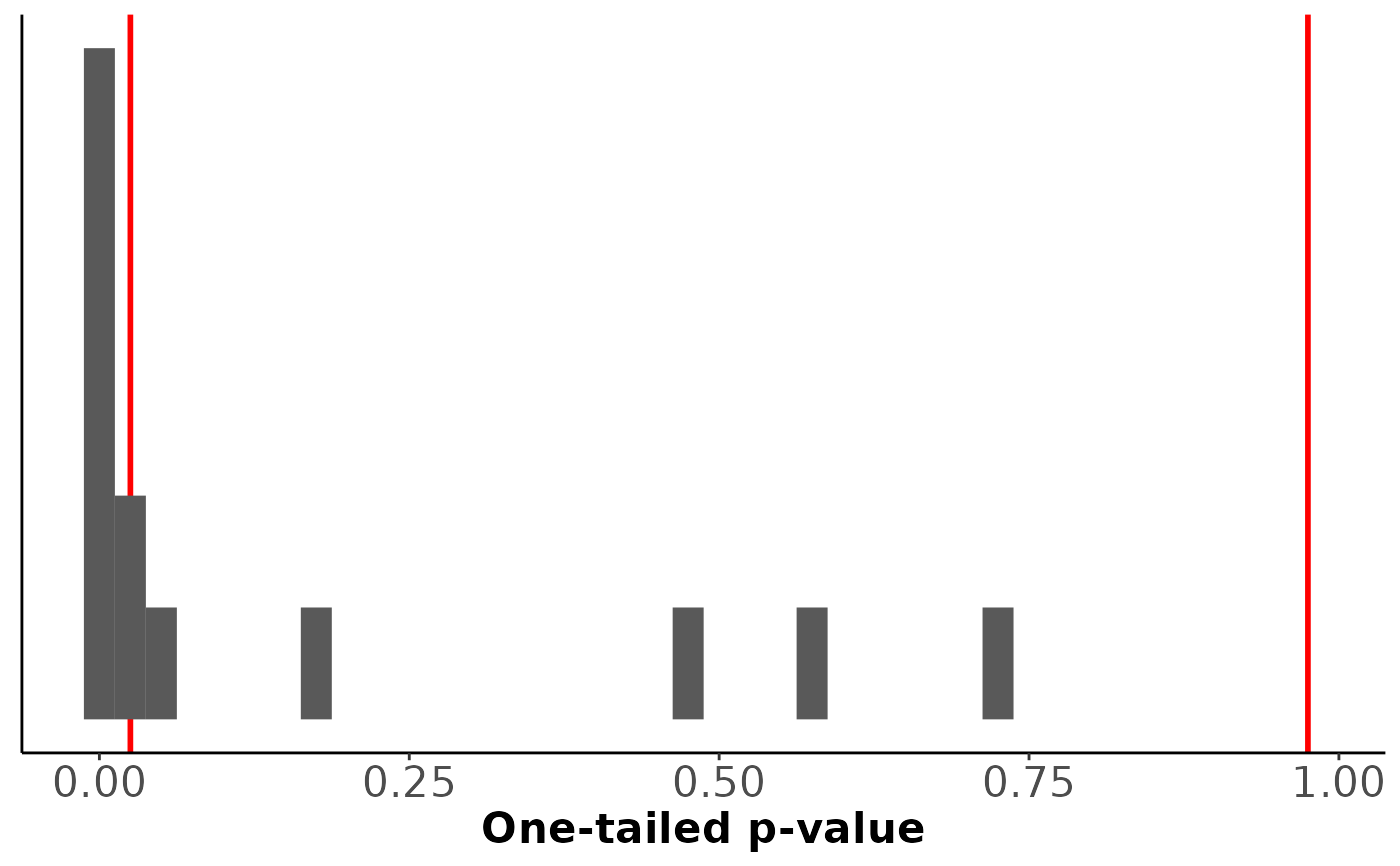Plots the one-tailed p-values. The leftmost red line indicates the cutoff for one-tailed p-values less than 0.025 (corresponding to "affirmative" studies; i.e., those with a positive point estimate and a two-tailed p-value less than 0.05). The rightmost red line indicates one-tailed p-values greater than 0.975 (i.e., studies with a negative point estimate and a two-tailed p-value less than 0.05). If there is a substantial point mass of p-values to the right of the rightmost red line, this suggests that selection may be two-tailed rather than one-tailed.
Arguments
- yi
A vector of point estimates to be meta-analyzed. The signs of the estimates should be chosen such that publication bias is assumed to operate in favor of positive estimates.
- vi
A vector of estimated variances (i.e., squared standard errors) for the point estimates.
- sei
A vector of estimated standard errors for the point estimates. (Only one of
viorseineeds to be specified).- alpha_select
Alpha level at which an estimate's probability of being favored by publication bias is assumed to change (i.e., the threshold at which study investigators, journal editors, etc., consider an estimate to be significant).
